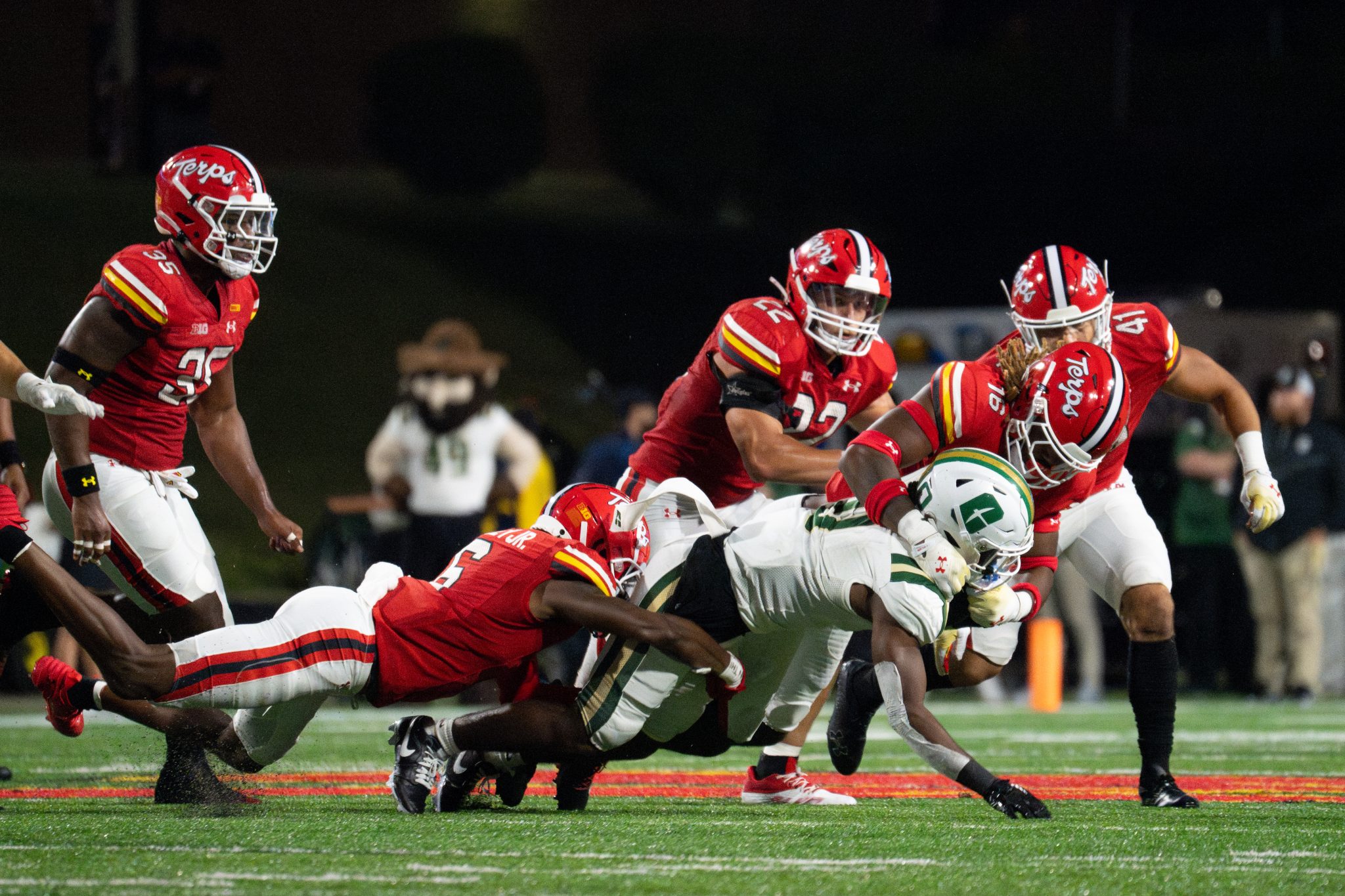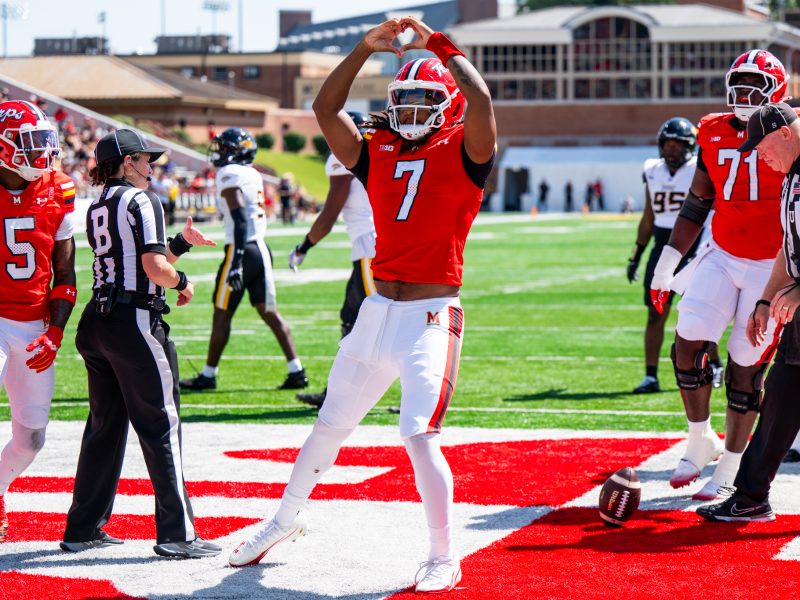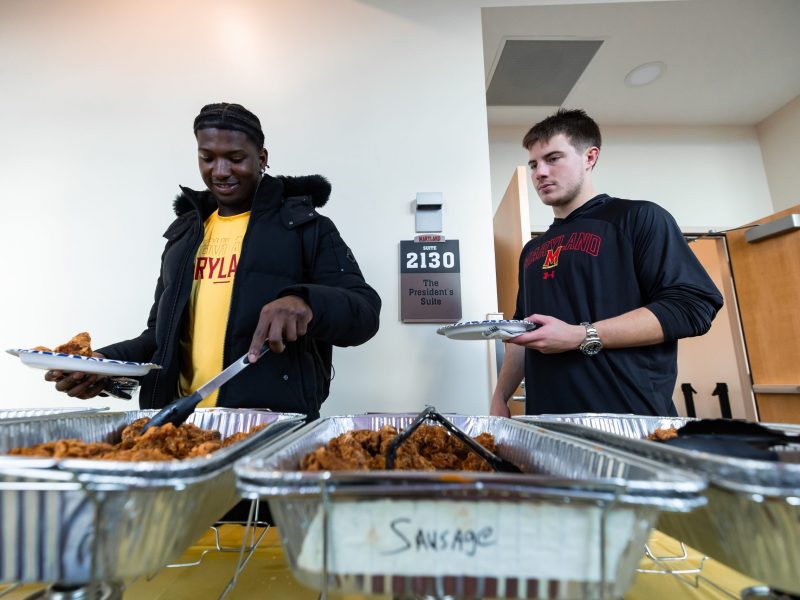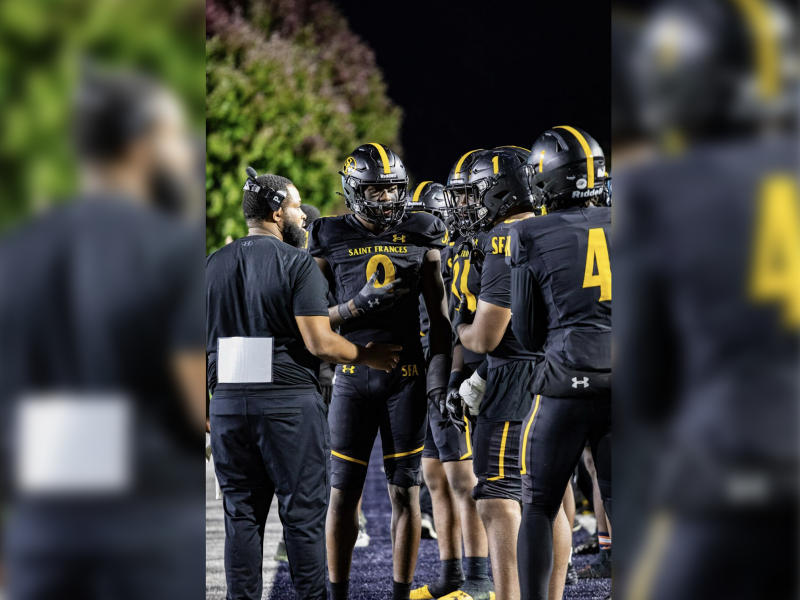Maryland’s defense faced a crucial third down late in the first quarter against Charlotte on Saturday, already trailing by two touchdowns with the 49ers nearing the Terps’ side of midfield.
Lined up on the inside of Maryland football’s defensive line, Tommy Akingbesote shed a block and hauled Charlotte quarterback Jalon Jones to the ground to thwart the team’s drive.
The 49ers later struck for 17 yards on just two plays on their first drive of the third quarter. Then Akingbesote — lined up over Charlotte’s left tackle — shoved his blocker into the backfield to stop running back Durell Robinson for a slim one-yard gain.
Akingbesote has been a difference-maker in multiple spots along the Terps’ front unit, creating versatility along the defensive line. He’s not alone.
“Because of the type of program we are, we’re always trying to develop, and you don’t develop your players on the bench,” coach Michael Locksley said. “We try to find ways to create roles that allow each player to have some ownership in our program. When we’re able to do that, that’s where I find us at our best.”
Akingbesote is one of three linemen to play 10 or more snaps both in the interior — when he lines up over a center or guard — and on the outside — when he lines up over or outside of an offensive tackle, according to Pro Football Focus, joining Tre Colbert and Dillan Fontus. Taizse Johnson is one interior snap away from becoming the fourth.
[‘I didn’t see panic’: Maryland football faltered against Charlotte but didn’t collapse]
Through two games this season, Akingbesote has demonstrated his flexibility along the defensive line.
The junior’s snaps are close to an even split between the interior versus outside of an offensive line — a stark contrast from his freshman campaign that featured 86.7 percent of his snaps against guards or centers and just 13.3 percent against tackles, according to Pro Football Focus.
Johnson, like Akingbesote, has turned into a versatile lineman. He strictly received interior snaps his freshman year. This season, he lines up over a tackle roughly 74 percent of the time.
After transferring from Angelo State this offseason, Colbert has carved out a role despite a crowded Maryland defensive line room that features seven upperclassmen. He’s played about 52 percent of snaps on the interior and lines up on the outside roughly 48 percent of the time.
Fontus is one of only two true freshmen on the defensive line to receive snaps through two games. The former three-star earned the Terps’ defensive staff’s trust because of his versatility, playing primarily over a tackle, where he’s logged 22 snaps, but also displaying the ability to shift inside, which he’s done seven times.
Maryland is one of just four Big Ten schools with at least three defensive linemen to play more than 10 snaps both in the interior and on the outside. To Locksley, that defensive line versatility philosophy prevents players from wanting to go elsewhere for more playing time.
[Roman Hemby hopes to improve in pass protection to keep his quarterback upright]
“The reason guys transfer typically is because they don’t play and so we try to find and create roles for all the players in our program,” Locksley said.
The Terps’ linebackers possess a similar versatility to their defensive line.
Edge rushers Kellan Wyatt and Donnell Brown have registered 10 or more snaps both as pass rushers and in coverage. Brown secured Maryland’s first turnover of the season with an interception in the fourth quarter against Charlotte.
Jaishawn Barham, who was a Freshman All-American, has excelled regardless of his role. The sophomore has been utilized as a pass rusher, accounting for two sacks, but most of his passing down snaps have been in coverage, where he’s only been targeted once in 18 snaps.
Barham’s talent in multiple areas on the field strengthens the defense around him. Fellow inside linebacker Caleb Wheatland has been a beneficiary of Barham, who has been able to play with less restraint next to Barham. Through two games, Wheatland ranks second on the team in tackles.
“[Barham] just gives us a lot of freedom,” Wheatland said. “He’s a great player, I love playing with him, there’s just a lot that he can do, and I just feel like we can do a lot more with our defense.”
Maryland’s defense opens up because of its versatility. That versatility also keeps players fresh late in games, which allows its best defenders to play “really strong in the fourth quarter,” Locksley said — the key to his team’s ability to finish strong.



